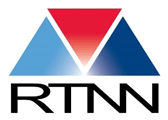The RTNN has created immersive lab experiences for K-12 students in an effort to give students engaging, hands-on activities in our facilities. In this program, students come to the facilities and work alongside other users. To prepare for the visit, the activities include work outside the facilities including watching videos, collecting samples to image, and designing a photomask. In the facilities, students operate the equipment and take ownership of the work. We have designed several experiences:
Photolithography
Photolithography is a technique that uses light to transfer a pattern onto a substrate to produce a device or structure such as a computer chip. The lab experience includes an introduction to photolithography and a demonstration of the photolithography
equipment at the RTNN. Participants will enter the cleanroom and perform photolithography on their own samples using photomasks that they design. This is a chance to not only learn about photolithography, but to perform the process and pattern a sample; participants can take their samples home as a souvenir!
Electromagnetism
Electron microscopy allows scientists to image nanoscale features with a beam of electrons. Electromagnetic lenses are used to focus and shape the electron beam in order to produce well-resolved images. This experience is designed to show that physics concepts play an important role in instrumental design and operation. Students will: discuss the differences between optical and electron microscopes, learn how electromagnetic lenses work, handle an electromagnetic lens and learn about its components, and use a scanning electron microscope (SEM) to image samples. Students will see how changing the current in an electromagnetic lens greatly alters the image produced.
Microcomputed Tomography (Middle and High School versions)
MicroCT is a technique that uses x-rays to visualize the 3D internal structure of an object. The lab experience includes an introduction to the MicroCT and a demonstration of the equipment at the RTNN. Participants will be introduced to the interpretation of MicroCT images of common household items to gain an understanding of the capabilities of 3D X-Ray imaging. Then students will choose a sample to bring to the RTNN, and will image their samples in the MicroCT. This is a chance to learn about the MicroCT and to participate in the acquisition and interpretation of the images!
Scanning Electron Microscopy (Middle and High School versions)
Students will learn about size and scale, and how electron microscopy allows us to look at very tiny objects. The students will collect their own samples, and we will join your class to look at the samples using a visible light microscope that we will provide. Next the students will bring their samples to our nanotechnology facility, and they will view their samples under the scanning electron microscope (SEM). They will also tour the nanotechnology facility and learn about specialized equipment that is used to advance engineering, medicine, and biology.
Nanoparticle Synthesis
Nanoparticles are used in all kinds of things you interact with on a daily basis including sunscreens, antibiotic treatments, solar cells, and cosmetics. The RTNN invites you and your students to synthesize gold nanoparticles in your lab classroom and characterize those nanoparticles with a variety of analytical instrumentation in the RTNN. The students will confirm the synthesis of the nanoparticles using ultra-violet spectroscopy (UV-vis), acquire images of their nanoparticles using transmission electron microscopy (TEM), and quantify their chemical composition using energy-dispersive spectroscopy (EDS). Their visit to the RTNN will also include a tour of our facility, including our cleanroom, to learn about other cutting-edge analytical instrumentation and nanofabrication equipment.

